The main tasks that can be solved using skirting boards:
- Masking the gap between the canvas fixed in the mounting profile and the wall;
- Giving the interior a finished look;
- Underline the selected room style;
- Additional ceiling lighting with LED strips.
Unlike inserts-plugs, the skirting board can be made of various materials, which makes it possible to choose the most suitable option in each specific case. Of course, the purchase and installation of skirting boards will require additional costs. Should you carry them? Definitely worth it if you want the space to look neat, stylish and modern.
Types of ceiling plinths for stretch ceilings
It is easiest to classify skirting boards according to the material from which they are made. The following restrictions are imposed on the material:
- it should not be heavy, as it is attached, as a rule, to the wall surface with glue, and too much force will lead to rapid separation;
- it must be flexible enough so that slight unevenness in the walls does not affect the installation and the strength of the fastening.
Ceiling skirting boards are made from the following materials:
- expanded polystyrene (polystyrene),
- polyurethane,
- polyvinyl chloride.
The skirting board can be made of wood, which is justified if the walls of the house are made of timber. It is permissible to be made of plaster if a stucco cornice is required under a stretch ceiling. But in general, such materials are rarely used.
Polystyrene ceiling skirting board for stretch ceiling
This is the most budgetary option for decorating the under-ceiling space, which has a lot of advantages:
- Variety of designs, including stucco imitation;
- Ease of processing, lends itself to cutting with a stationery knife;
- Light weight, which allows the use of inexpensive glue for installation;
- Low price.
Significant disadvantages are also attached to the list of advantages:
- Brittleness, fragility;
- May lose shape under the influence of certain solvents included in the adhesives;
- Lack of flexibility, making installation on uneven walls problematic.
Undoubtedly, the main advantage of the foam plinth is the low price, it is even lower than the price of plastic plugs, so with a limited budget, such a plinth can be a good choice.
Polyurethane skirting board for stretch ceilings
This material has a high specific density, respectively, the weight of the product will turn out to be relatively large. However, polyurethane also has its advantages:
- Flexibility, the ability to "bypass" minor irregularities without losing the quality of adhesion to the wall;
- Strength;
- Durability without loss of appearance and performance;
- Easy to handle, can be cut with a conventional knife;
There are also disadvantages:
- Large weight;
- High price.
The main disadvantage of polyurethane is its heavy weight.When gluing to the wall, you will need special glue, while there is no guarantee that after some time, under their own weight, the skirting boards will not sag and will not move away from the wall, forming ugly cracks.
However, the attractive appearance and long service life of polyurethane prompted manufacturers to provide for a glueless mounting option: special guides are made in the profile, into which a specially shaped polyurethane fillet is inserted. Of course, the choice of such skirting boards is limited, but this is offset by an attractive design for years to come.
PVC stretch ceiling skirting board
PVC is a plastic that allows you to create ceiling plinths of a wide variety of shapes and colors, give them the appearance of various materials, such as wood or metal, and also inexpensive in price. Its main advantages:
- Ease;
- Strength;
- A variety of colors and textures;
- Low price.
Cons of PVC skirting boards:
- It does not have the ability to bend, therefore, it requires perfectly flat wall surfaces for installation;
- Under the influence of light, over time, it loses its attractive appearance, turns yellow;
- Difficult to process, you need to use a special tool (hacksaw) for cutting.
To make the right choice, you need to decide which skirting board is better for stretch ceilings in your case - more flexible and lightweight, or solid and massive? This largely depends on the profile on which the ceiling sheet is fixed. If it provides for fastening for fillets, it may be worth paying attention to polyurethane skirting boards. If a standard profile is used, and wall defects are insignificant, you can purchase a polystyrene ceiling plinth.
The main parameters taken into account when choosing a ceiling plinth
The first important thing to determine is which room you are decorating for. If it is a kitchen or a bathroom, the skirting board should be easy to clean and withstand high humidity. In the bedroom, this condition is not necessary, but it is important that the polymer does not emit harmful substances into the air, and the material for its manufacture has a safety certificate. In addition, you will have to take into account a lot of nuances: the style of the room, its size, the height of the ceilings. Depending on them, it is necessary to select skirting boards for a stretch ceiling according to the following parameters:
-
Width. This parameter depends not only on the style of the interior, but also on the size of the room. For example, with a low ceiling height, a wide plinth will look disproportionate and visually make the room even "lower". If the ceiling height is large, too narrow fillet runs the risk of being invisible and "lost" against the general background. When calculating the optimal width, you can rely on the following figures:
- With a ceiling height of up to 2.5 m, the plinth width should not exceed 4 cm;
- Ceilings up to 3 m require plinths with a width of 5 to 10 cm;
- For ceilings above 3 m, skirting boards of 10 cm or more can be used.
- The form. The shape of the plinth for a stretch ceiling can be almost any, it can have relief patterns, both simple, in the form of convex lines, and complex, imitating stucco molding. The form is selected for the main style of the interior or the classic version is chosen - in the event that a specific style is not defined or it is planned to use a mixture of styles. There is a rule here that all designers follow: for complex, fanciful decoration of the room, fillets are preferable to simple, classic forms, and vice versa: with simple walls and ceilings, you can use curly skirting boards.
- Color. Skirting boards are available in almost any color. They can resemble different types of wood, or imitate a marble surface. Plinths "under the metal" are not uncommon. Plinths of various colors are also popular. The color is selected based on the style of the room. At the same time, one should not forget that color affects the perception of space.So, plinths, merging in color with a stretch ceiling, will visually increase the area of the room, and painted in the color of the walls will help to visually "raise" the ceiling.
Special types of skirting boards for stretch ceilings
To solve non-standard design tasks, non-standard tools are required. For example, to make the ceiling taller, experts advise using a ceiling light, for which it must be hidden behind a cornice. It happens that the ceiling has complex curved shapes that emphasize zoning or create a certain style. In such cases, standard skirting board materials are also not suitable. Let's consider some special types of skirting boards that allow you to solve specific interior tasks.
Indirect lighting skirting board
To form the effect of a "raised" ceiling, add lightness, airiness, volume to the room, use a backlight tape assembled from LEDs. Such a tape is laid in the skirting boards, in which a special "shelf" is provided for this purpose. In addition, the part of the skirting board facing the stretch ceiling can be covered with a foil made of reflective material, for example, foil - this will enhance the illumination and give it depth.
Volumetric skirting boards for stretch ceilings can hide the places for fixing individual point light sources. In the event that special skirting boards of the required design were not found on sale, you can use the usual ones, placing them below the fastening of the ceiling sheet by a few centimeters. In this case, the plinth must have a width sufficient for laying the LED strip.
Curved stretch ceiling skirting board
Even the most "flexible" options for typical ceiling plinths cannot be used in cases where the stretch ceiling is made at different levels, and its individual parts have complex non-linear shapes. Special skirting boards with special elasticity are produced for them. Flex skirting boards are quite expensive, but there is no alternative.

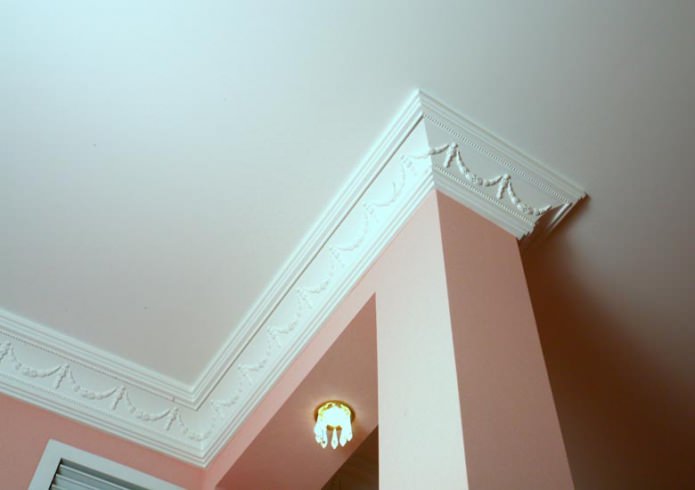
 10 practical tips for arranging a small kitchen in the country
10 practical tips for arranging a small kitchen in the country
 12 simple ideas for a small garden that will make it visually spacious
12 simple ideas for a small garden that will make it visually spacious
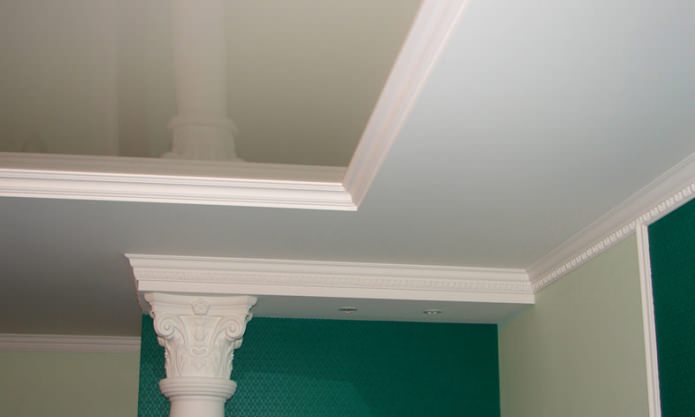
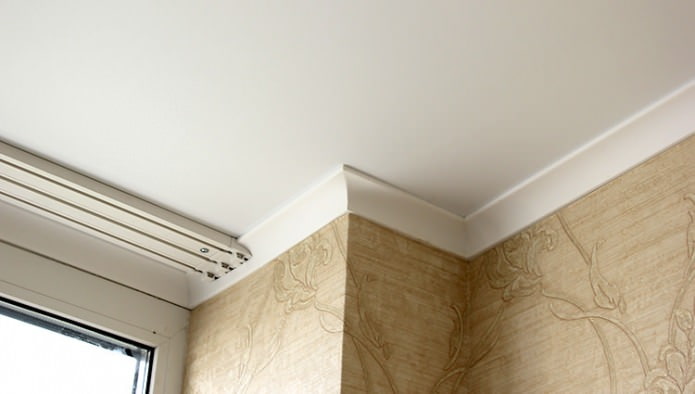
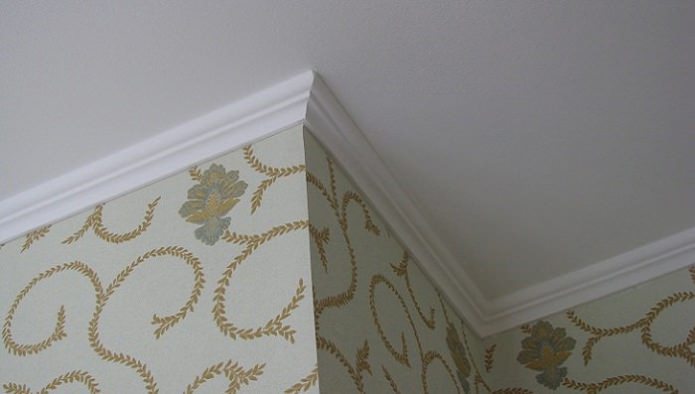


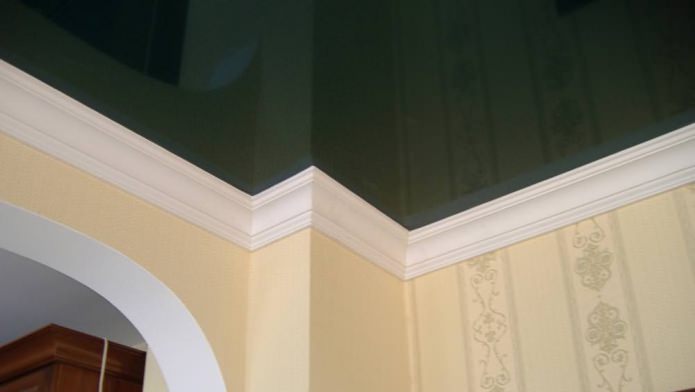
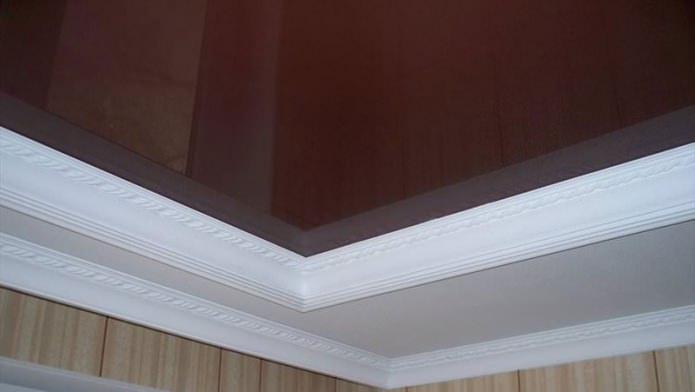

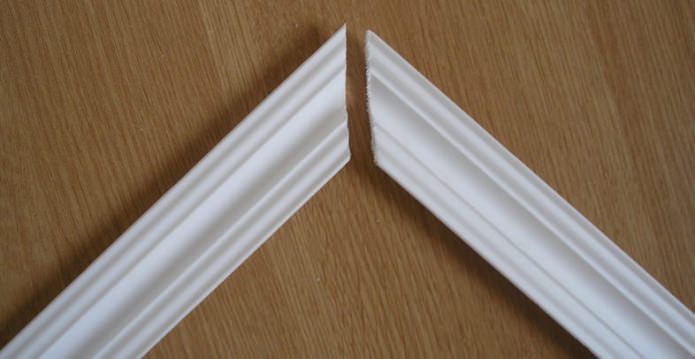

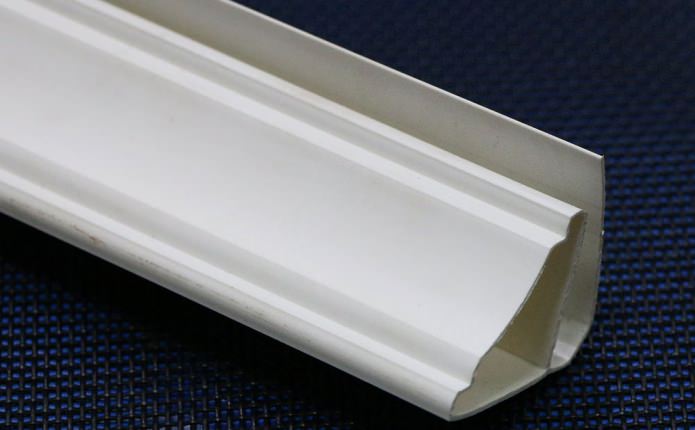
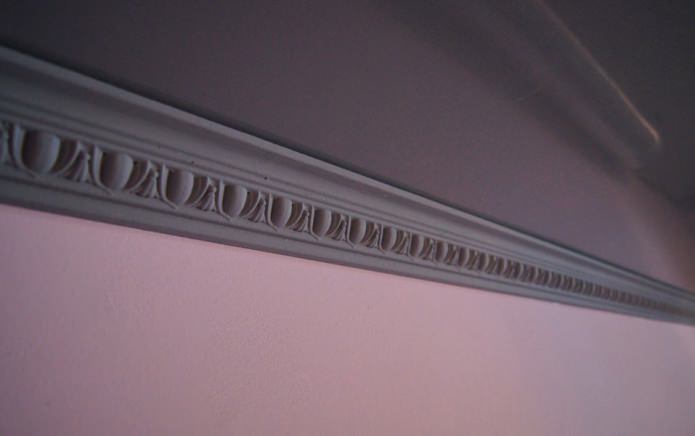
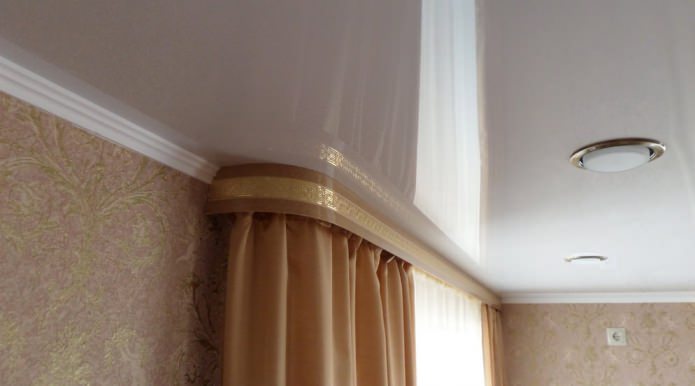

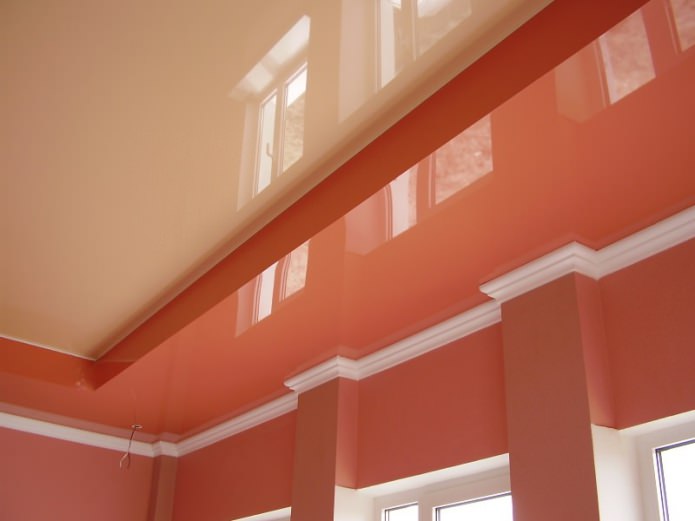
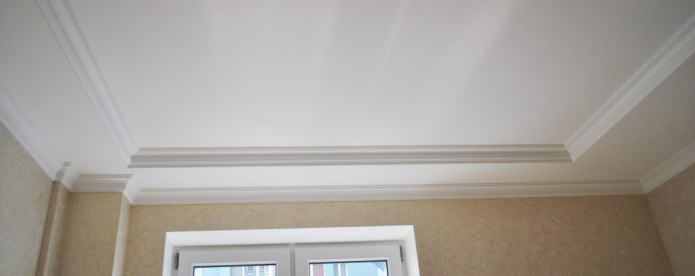
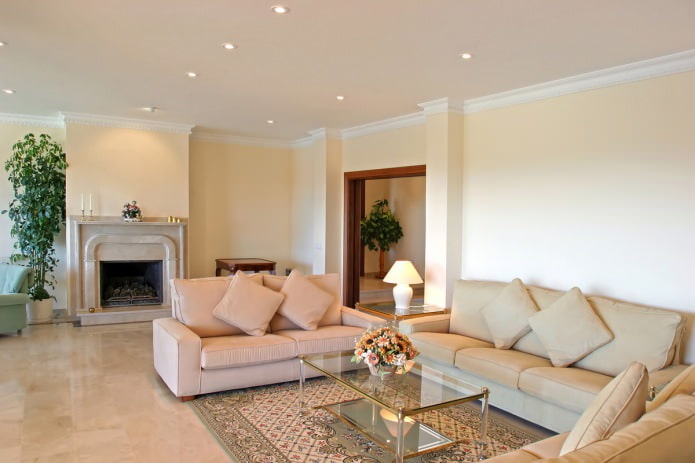
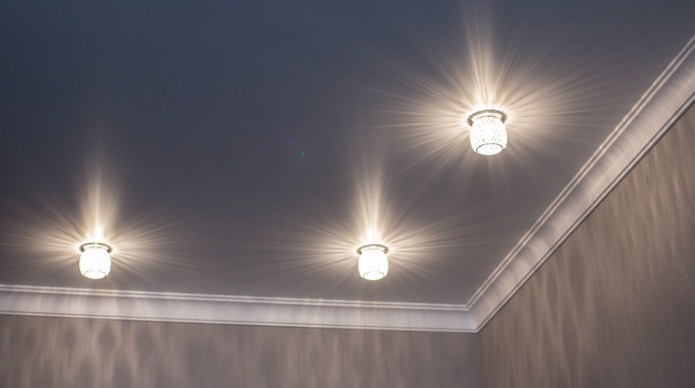
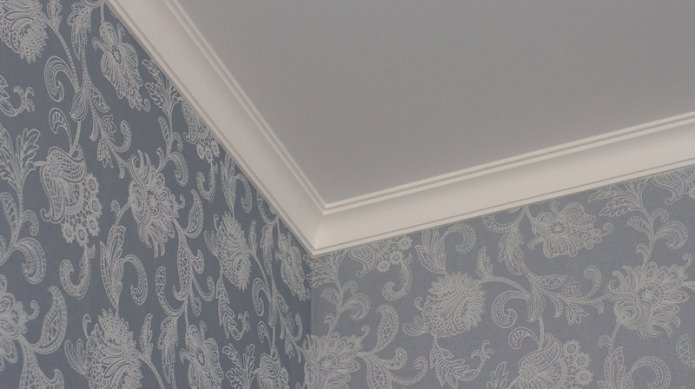
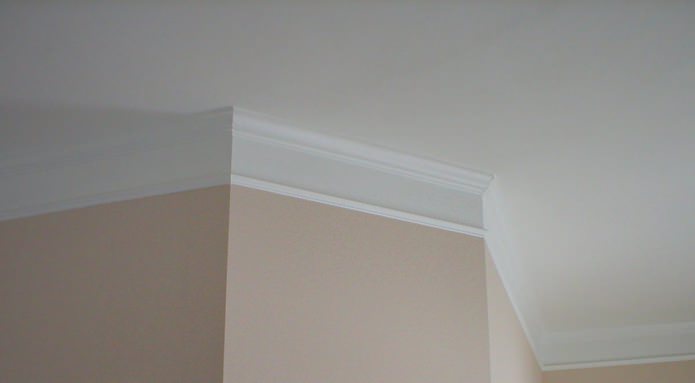
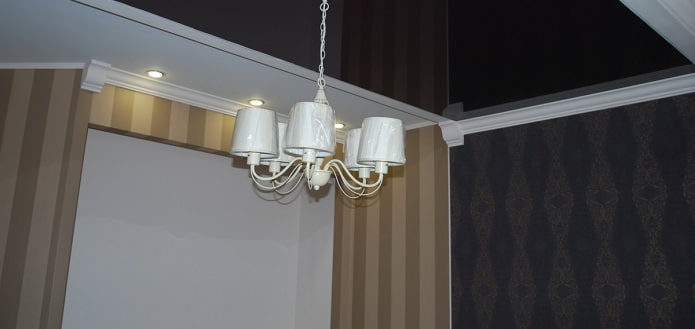
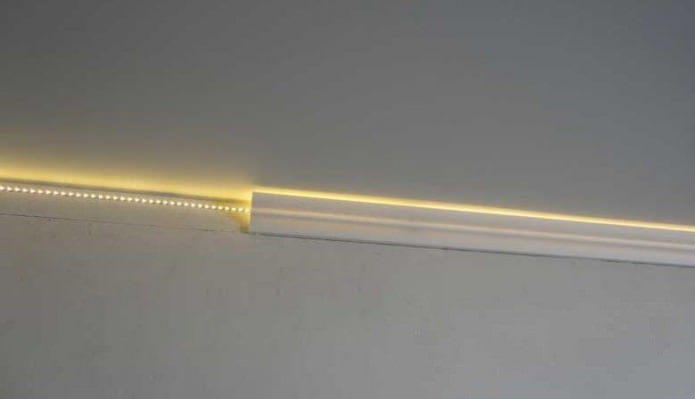
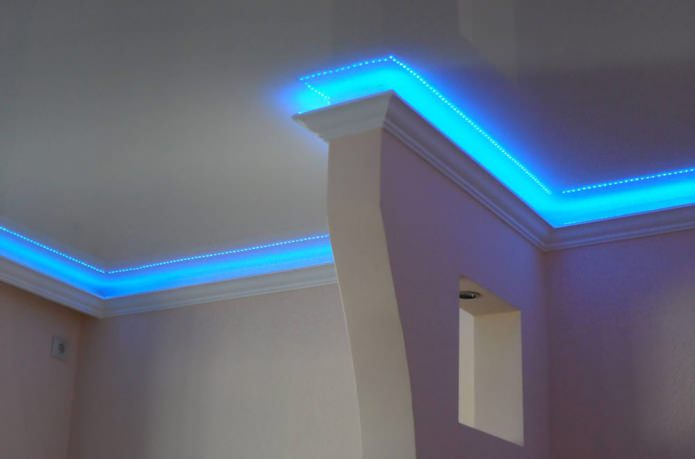
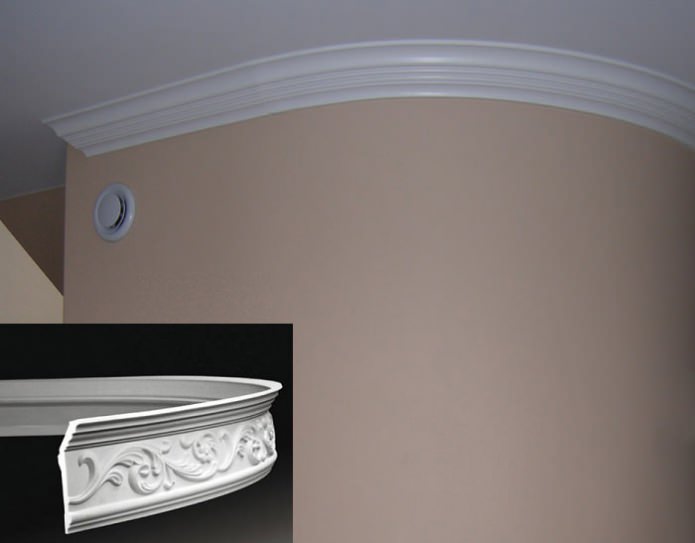

 What is better not to do it yourself during the repair?
What is better not to do it yourself during the repair? Bloated linoleum: how to fix it without disassembly
Bloated linoleum: how to fix it without disassembly The worst decisions in apartment renovation
The worst decisions in apartment renovation  Installation of ceiling tiles: choice of materials, preparation, order of work
Installation of ceiling tiles: choice of materials, preparation, order of work How to glue a ceiling plinth to a stretch ceiling?
How to glue a ceiling plinth to a stretch ceiling?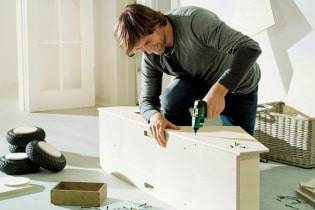 How to choose a screwdriver for your home?
How to choose a screwdriver for your home?